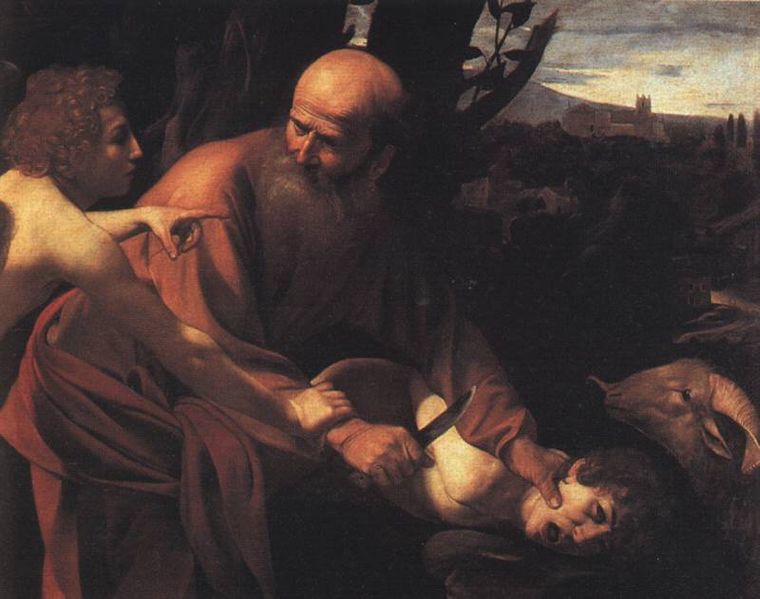| Sacrifice of Isaac | |
|---|---|
 |
|
| Artist | Caravaggio |
| Year | 1603 |
| Medium | Oil on canvas |
| Location | Uffizi, Florence |
| Dimensions | 41 in × 53 in |
| 104 cm × 135 cm | |
| Famous Paintings by Caravaggio | |
| David with the Head of Goliath | |
| Medusa | |
| Bacchus | |
| Conversion of St. Paul | |
| Ecce Homo | |
| Narcissus | |
| Judith Beheading Holofernes | |
| Supper At Emmaus | |
| Sacrifice of Isaac | |
| Complete Works |
The great Renaissance painter Caravaggio actually did two paintings of the Sacrifice of Isaac, both of them depicting the moment when the angel of God stays Abraham from slitting his son’s throat. The painting that’s actually called the Sacrifice of Isaac now hangs in the Uffizi Gallery in Florence. It was painted by the artist between 1603 and 1604 and was commissioned by Cardinal Maffeo Barberini, who went on to become Pope Urban VIII.
Description
In this version of the subject, the angel has arrived just in time to stop the patriarch from his ghastly sacrifice. The angel’s hand is actually clamped on the wrist of the hand that holds the knife. His other hand points toward the ram that will be sacrificed in Isaac’s stead. The animal looks oddly serene, as if he understands the situation and has actually come to offer himself. Less serene is the figure of Isaac, struggling and screaming under the weight of his father, whose free hand is clamped on the nape of his neck as firmly as the angel’s hand is clamped on his wrist. In another jot of horror, Caravaggio makes us see, and even feel, the press of Abraham’s thumb on his son’s cheek.
Technique
The painting is suffused with Caravaggio’s chiaroscuro (light/dark) technique, where bright light falls dramatically on some aspects of the scene while other aspects are kept in darkness. Here, the light falls on the back and shoulders of the angel (we can just see the shadow of his wings), on Abraham’s orange robe, his bald dome and wrinkled brow, and on the thrust of the struggling Isaac’s shoulder and his anguished face. Even the ram is bathed in a soft, but lesser light.
The background of this terrible scene is murky. The action seems to take place in the shadow of a dark, gnarled tree. The deep background is also dark and oddly unsettled. The landscape seems to be either recovering from or bracing for a storm. The hill, dotted with dwellings, mounts up to what looks like a decidedly medieval cathedral or castle. The magisterial building stands against a jaundiced sky. Clouds are either in the process of covering it up or retreating. Given the action in the foreground, the viewer might hope that the storm, or its threat, has come and gone.